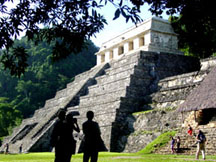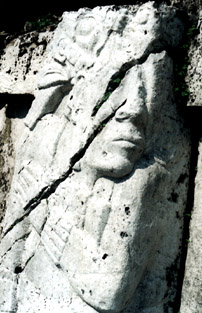

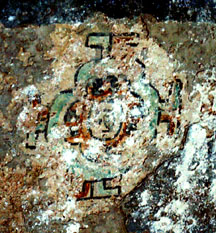
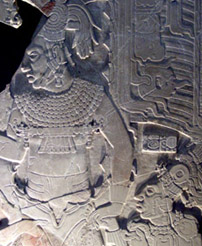
|
Palenque is situated in the highland rainforest near the Mexican/Guatemalan border. With a lush canopy of trees rising 200 feet above your head you are immediately struck by the awesome power of the forest´s ability to enchant you, as it must have enchanted the original builders of Palenque. This site dates from the Classic period, peaking at 600 to 700 A.D. It was a place of ceremony and wielded great political power in some surprising ways. The site itself rests on grassy grounds that are beautifully kept, as they must have been when the ancient city of Palenque flourished.
Palenque is exciting because of the vast amounts of information that has been painstakingly brought to light by archeologists over the years. Numerous wonderful examples of Maya art and history are carved into the facades of Palenque's temples. In some places you will see the color coats of ancient times in their rich arrays of blues and reds. Palenque raises many questions as to the origin of the symbology there. With symbols and friezes such as these, the concept of influences from the Far East seems plausible.
Palenque is known for having begun what has been termed the ¨Cult of Personality¨ for its glorification of specific rulers that is unique in the ancient Mayan world. It has been asserted by many people that study the history of Palenque that many of the friezes and much of the writing indicates the rulers were involved in a propaganda campaign. This may have been due to the fact that Pacal, a famous king of Palenque, had a somewhat tenuous right to the throne. The story of his coming to kingship shows that he would never have ascended the throne without the help of two famous women in the royal family who played a unique role in Mayan history.
Pacal´s mother, Lady Zac-Kuk, was one of only two women in Mayan history ever to rule in her own right. The other was her grandmother Lady Kanal-Ikal. For many generations the royal lineage had been based on patrilineal connections which passed kingship only to sons, but Lady Kanal-Ikal changed precedence when she asserted her right to rule as the daughter of a king. Her granddaughter, Lady Zac-Kuk, became even more unorthodox by asserting her right to rule based on having had a grandmother who had been queen. Both women are listed in the genealogies recorded at Palenque as ¨kings". A great visionary who delivered prophecies while in a trance state, Lady Zac-Kuk asserted that even though her husband was not of the royal lineage, her son was through his relationship to her. She wielded enough power to convince the ruling council to name her son king, but he spent a lifetime reinforcing his claim of legitimacy so the right of his sons would never be challenged.
The Oval Palace Tablet discovered in the Governor's Palace shows Pacal taking the jaguar throne. As his mother hands him the crown the destiny of the Maya of this rainforest region is forever changed. Thus Pacal ascended the throne under his mother´s authority and began his reign by commissioning friezes and works that appear to be rewriting history, and even changing Mayan mythology in order to usher in his unorthodox ascension to the throne.
Pacal must have had savvy and wisdom as well as military prowess, for his reign as king is one of the longest in world history. The Tomb of Pacal (the first sarcophagus discovered in the Mayan world), located deep withn the Temple of Inscriptions, contains one of the most intricate, massive and famous pieces of art left to us by the ancient Maya.
The Palenque archaeological site also possesses proof that the ancient Maya did not believe that the Maya Long Count Calendar would "end" on Dec. 21, 2012. A glyph text on the Temple of Inscriptions states that a celebration of the anniversary of King Pacal's ascension to the throne will occur in the year 4772 AD.
On your visit to Palenque be sure to visit the impressive museum. The collection of sculptured art, busts, jade jewelry, and other relics of the Maya give us a look into their ancient world. The amazingly well-preserved and intricately decorated clay incense burners alone are well worth the visit.
The Maya ruins of Palenque extend far beyond the boundaries of the small area visited by most tourists. Take time to explore and take a break at one of the waterfalls to cool down and share stories with other fellow travelers. It is hard not to think of Palenque as paradise.
|
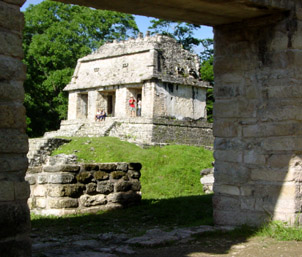
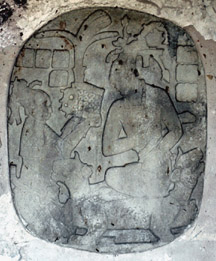
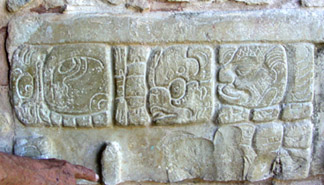
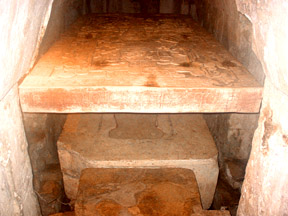
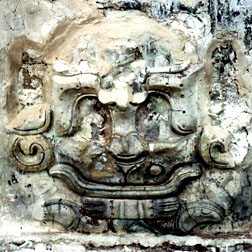
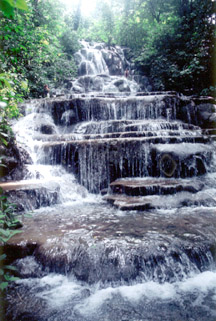 |
